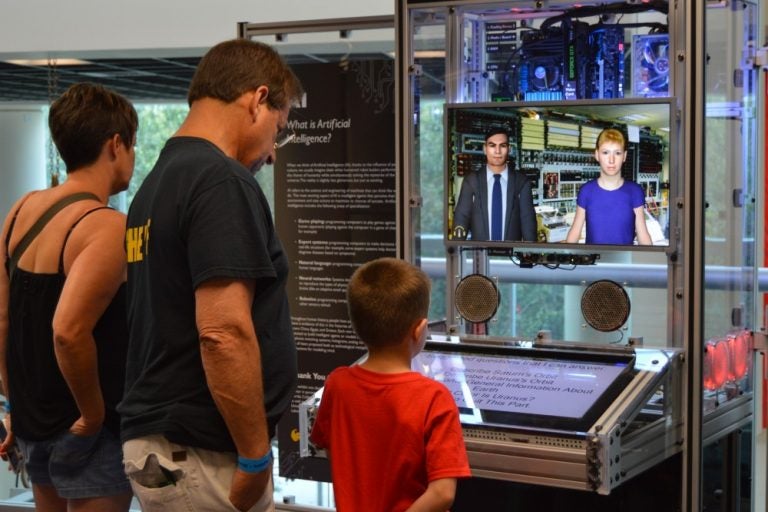Getting teens interested in artificial intelligence isn’t tough. Toymakers caught on to their fascination a few years ago when they began selling $100 robotic pet toys that children can “program” to do simple tricks through a toymaker’s web site.
However, getting kids to see beyond the toys and getting them interested in becoming computer scientists or engineers who create those toys has been a much harder sell. So, computer scientists and engineers at the University of Central Florida and the University of Illinois at Chicago (UIC) have partnered with the U.S. National Science Foundation to create a fun interactive museum exhibit at the Orlando Science Center that aims to teach as well as inspire those students.
The exhibit is colorful and gives visitors a peek inside the inner workings of a desktop computer. But it seems pretty bland until the narrator – an avatar of Alan Turing, the father of theoretical computer science and artificial intelligence, as well as a World War II hero — gets a hold of the visitor’s attention.
“We wanted something engaging and that would tell middle school students a little about the history of computing and how fascinating it can be,” said lead investigator for the project Avelino Gonzalez, a UCF computer science professor. “We had a modest budget, so we couldn’t go crazy. But I think people will be able to relate to the avatars and their life-like qualities.”
Gonzalez and fellow engineering professor at UCF Ronald DeMara partnered with Andy Johnson and Jason Leigh of the UIC Electronic Visualization Laboratory for the project. The National Science Foundation funded the work (NSF grant DRL1138325).
Turing’s avatar speaks in a proper British accent, voiced over by UCF drama student Roger Thacher. The avatar guides the museum visitor to “create” his or her own avatar by making choices offered via speech or through a touch screen. That new avatar then undergoes the Turing Test to determine if the avatar is artificially intelligent or not. While the user is interacting with her avatar, the exhibit explains the many ways we see artificial intelligence at work, from game playing and robotics to expert systems and neural networks.
The avatar also introduces the museum visitor to Eliza, the first computerized chatbot created at Massachusetts Institute of Technology between 1964 and 1966. Eliza emulates a psycho-therapist and was among the earliest attempts to have a computer process natural language. Eliza asks his or her patient how he or she is feeling, and responds to his/her answer, with sometimes-funny results.
The research team, which also included several students, including doctoral student James Hollister, used photos of themselves as templates that visitors use to create their own avatars. The team at the UIC turned those photos into computer-generated avatars.
“Our effort was to create photo-realistic avatars of people on a limited budget,” said UIC’s Johnson. “While artificial intelligence delivers the message, it is more compelling to hear and see a humanized avatar talk than to read text or listen to a disembodied voice. People are now used to casually conversing with their iPhones through Siri or when asking Google to search for information. Using avatars, we can add additional levels of emotion to the conversation, where the avatar’s body language, facial expressions, and voice reinforce each other.”
It took the team more than a year to create the exhibit, which is now housed on the third floor of the Orlando Science Center.
“The Orlando Science Center is always interested in developing experiences around topical science research — especially if that research is done in our own community,” said Andrea Hart, an experience designer at the Center. “The exhibit is a great example of how computer science and engineering can come together to create an imitation of intelligence, and provides visitors a greater understanding of what is required to produce such in-depth virtual experiences.”
Gonzalez said he hopes the exhibit ignites the imagination of future computer scientists and engineers and convinces some to pursue careers in computer science or computer engineering.
“AI refers to the science and engineering of machines that can think like we do,” Gonzalez said. “How can creating that not be exciting?”
